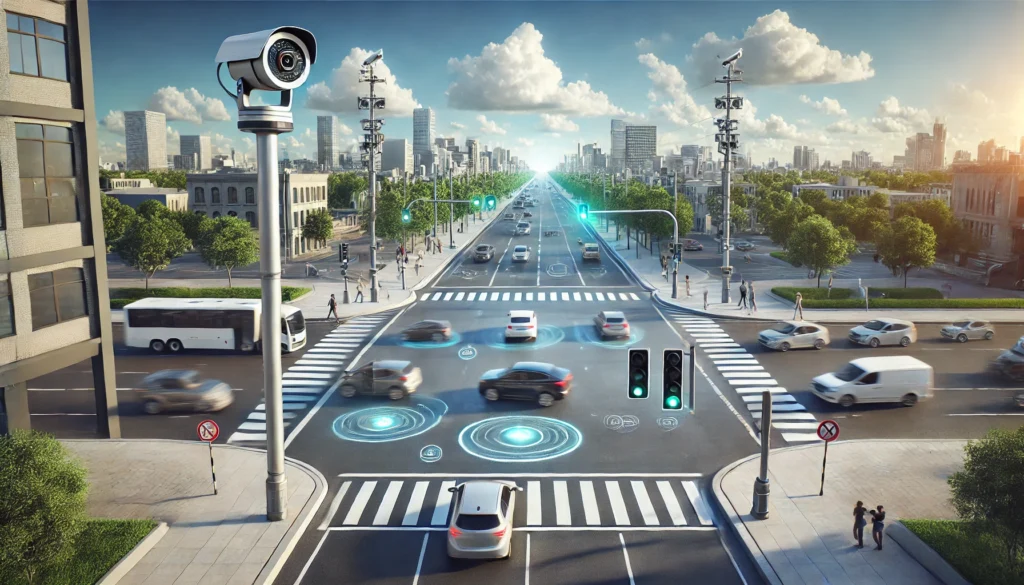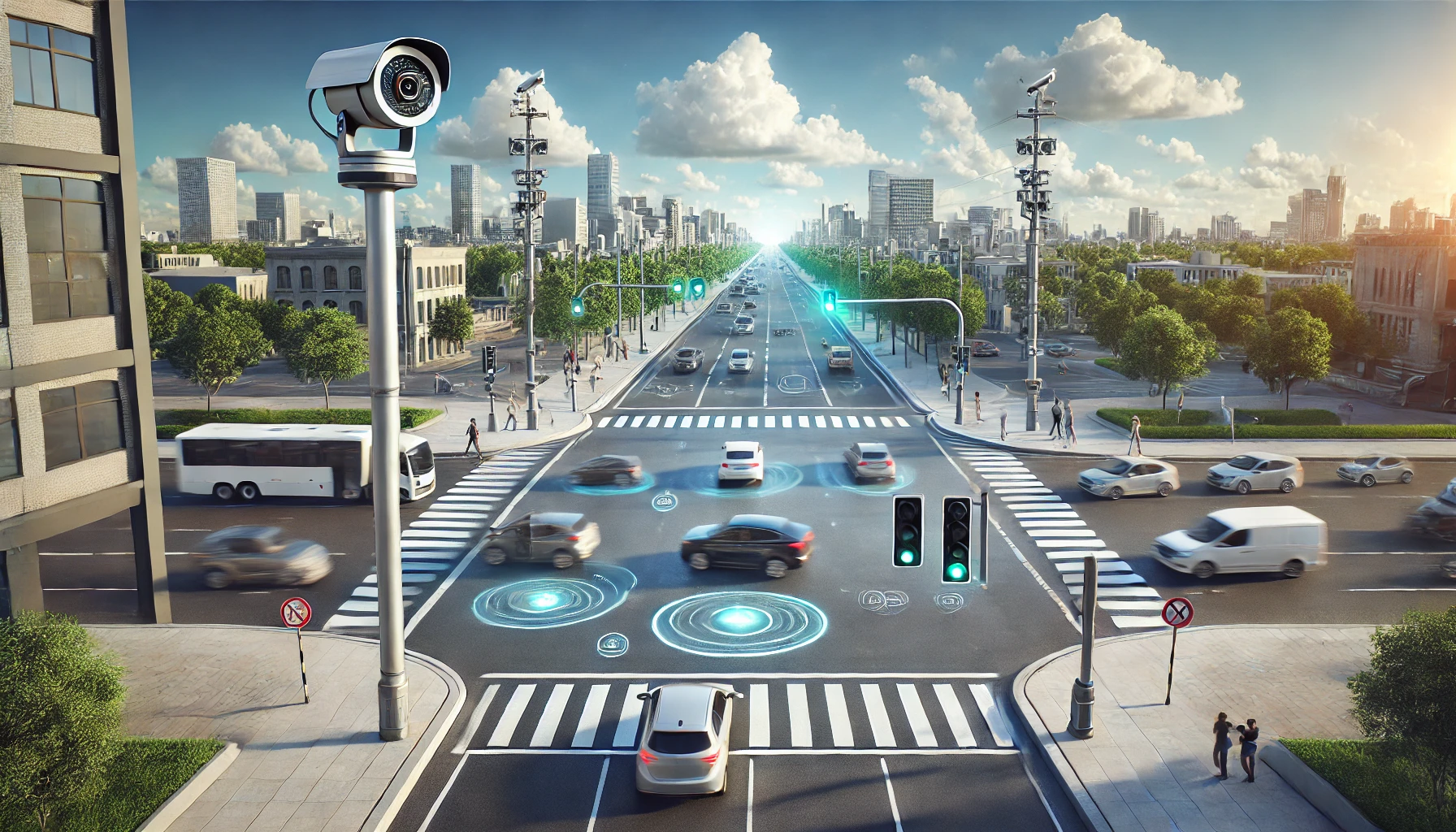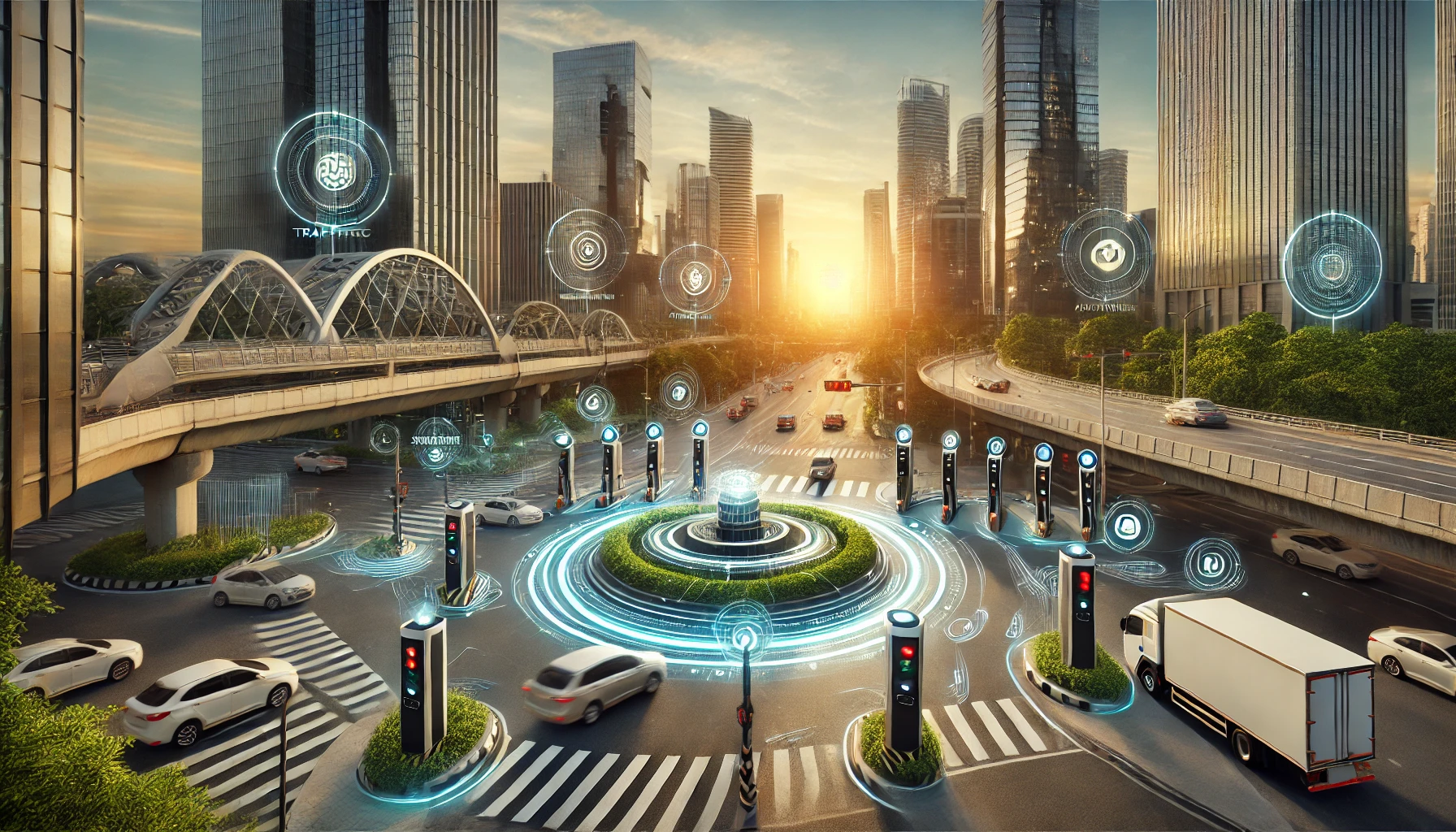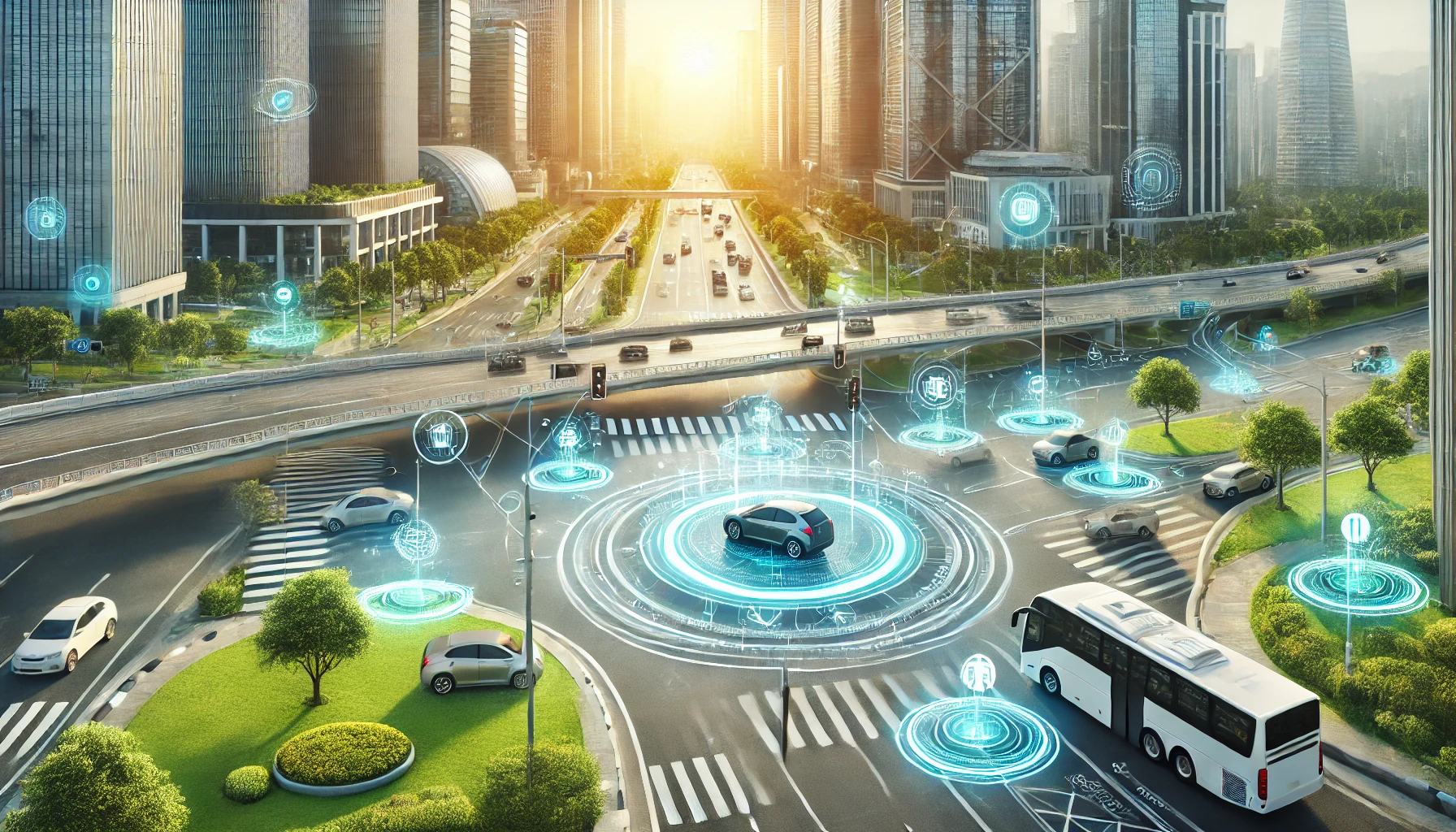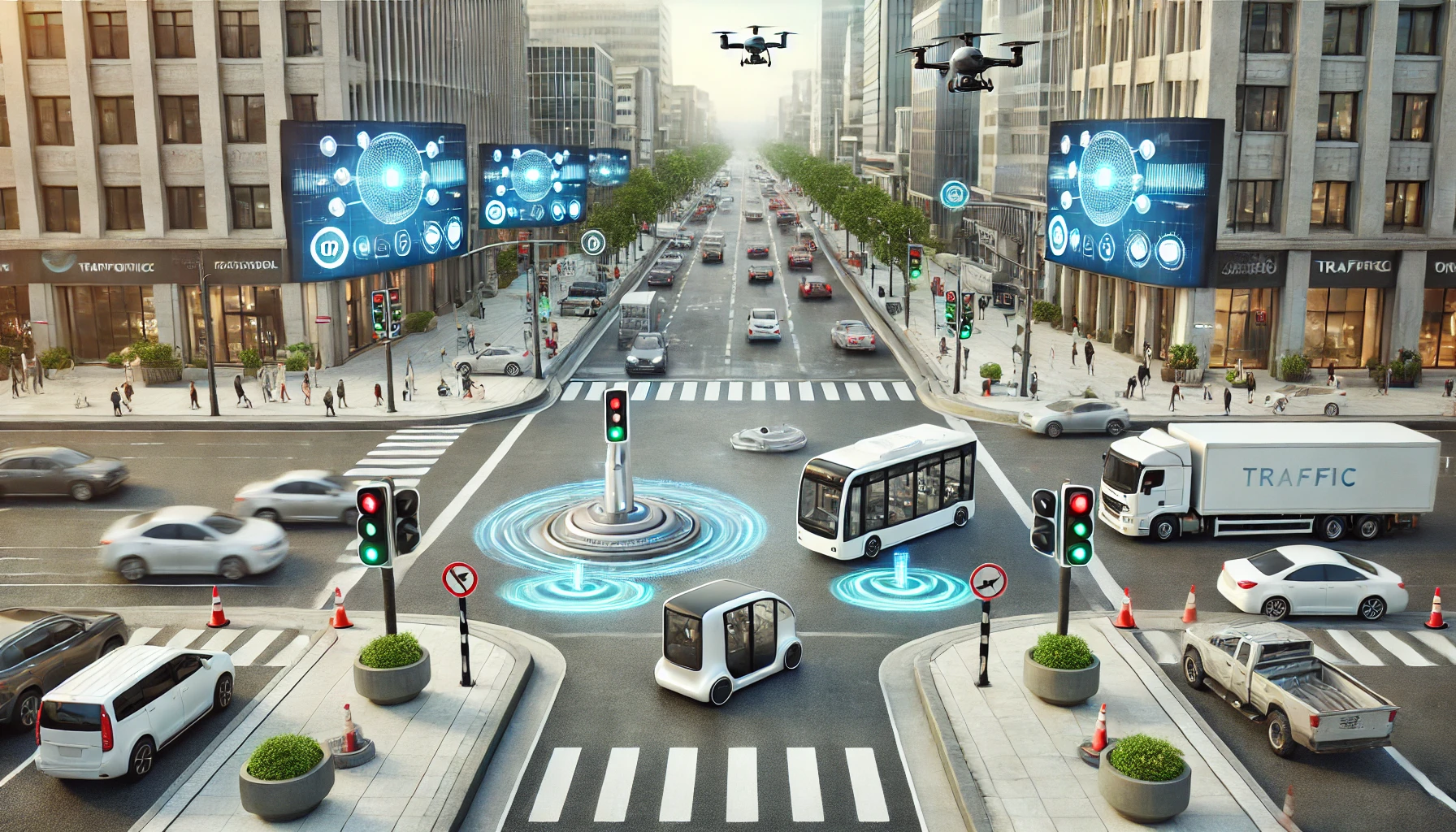Developing an automated traffic control system marks a significant leap forward in managing road traffic efficiently and safely. By leveraging advanced technologies, these systems ensure smoother traffic flow, reduce congestion and improve road safety. As urban areas grow and traffic volumes increase, automated traffic control has become essential in addressing modern transportation challenges. This article explores the different facets of automatic traffic control, its advantages, components like surveillance systems, barriers, and violation detection, and the vendors providing these solutions.
What is an Automated Traffic Control System?
An automated traffic control system uses advanced technology to monitor, manage, and control the flow of traffic on roads. These systems are designed to reduce human intervention, enabling real-time adjustments based on traffic conditions. They rely on a network of sensors, cameras, traffic lights, and computer algorithms to collect data, analyze traffic patterns, and control traffic lights and barriers to maintain smooth flow.
These systems are particularly useful in reducing congestion, managing traffic during peak hours, and improving the overall safety of road users. Automation minimizes reliance on manual traffic control, and responses to traffic changes are faster and more efficient.
Key Components of Automated Traffic Control
1. Automated Traffic Control Surveillance
One critical element of an automatic traffic control system is automated traffic control surveillance. This involves using cameras, sensors, and monitoring software to track the flow of traffic, detect violations, and ensure safety. Surveillance systems can identify real-time traffic bottlenecks, accidents, or incidents, allowing traffic authorities to respond quickly to mitigate disruptions.
These systems can detect traffic violations, such as running red lights, speeding, or improper lane changes, and automatically issue fines or warnings based on pre-set rules. The data gathered from these systems is also invaluable for city planners and traffic authorities to optimize traffic management strategies.
2. Automated Traffic Control Barriers
Another critical component of an automatic traffic control system is using automated traffic control barriers. These barriers regulate the movement of vehicles and ensure safe passage at toll booths, checkpoints, or closed roads. For example, in some cities, automated toll collection systems use barriers to control the flow of vehicles, only allowing passage when the correct toll is paid.
These barriers can be controlled remotely, and sensors can ensure that only authorized vehicles pass through at any given time. Automated barriers can also be part of an intelligent traffic management system that adjusts based on the traffic volume, time of day, and road conditions.
3. Automated Traffic Control Violation System
An automated traffic control violation system is essential for maintaining law and order on the roads. These systems can automatically detect traffic violations such as speeding, running red lights, or illegal turns. Once a breach is detected, the system can immediately send an alert or automatically issue a fine to the violating vehicle’s owner.
The advantage of this automation is that it reduces the need for human intervention, ensuring faster responses and making the roads safer. Moreover, automated violation detection systems act as a deterrent, encouraging drivers to follow traffic laws more diligently.
4. Automated Traffic Controller Experimentation
Automated traffic controller experimentation is an ongoing field of research in the quest for smarter traffic systems. Engineers and urban planners continuously experiment with different control algorithms and systems to improve the efficiency of traffic flow. This involves studying traffic patterns, conducting simulations, and testing prototypes in real-world scenarios.
Experimentation has led to the development of adaptive traffic control systems, which can adjust traffic signals in real-time based on traffic conditions. These systems use machine learning and artificial intelligence to predict and adapt to traffic patterns, improving the overall flow of vehicles and reducing waiting times at intersections.
5. Vendors of Automated Traffic Control Devices
There are numerous vendors of automated traffic control devices who design and supply the hardware and software needed for these systems. These vendors provide smart traffic lights, sensors, cameras, and violation detection systems. Some well-known companies in this field include Siemens, TransCore, and Hitachi, all offering comprehensive solutions for cities and municipalities aiming to implement automatic traffic control systems.
When selecting vendors, cities need to consider factors such as the scalability of the systems, integration with existing infrastructure, and the vendor’s ability to provide ongoing support and maintenance.
Advantages of Automated Traffic Control System
The shift toward automated traffic control benefits cities and road users. These advantages transform how we manage traffic and make roads safer and more efficient.
1. Improved Traffic Flow and Reduced Congestion
One of the main benefits of an automatic traffic control system is the improvement in traffic flow. These systems can reduce congestion and prevent traffic jams by using real-time data to adjust traffic signals and barriers. Automated systems can optimize signal timings, ensuring that traffic moves as efficiently as possible, especially during peak hours.
2. Increased Road Safety
Automatic traffic control systems enhance road safety by detecting potential hazards and adjusting traffic flow accordingly. They can also provide warnings to drivers about upcoming accidents or road conditions, allowing for quicker responses. Additionally, automated systems ensure consistent enforcement of traffic laws, such as speed limits and red lights, which reduces the likelihood of accidents caused by human error.
3. Reduced Environmental Impact
With improved traffic flow and reduced congestion, automatic traffic control systems contribute to a reduction in vehicle emissions. When traffic moves smoothly, vehicles spend less time idling or moving at slow speeds, which decreases fuel consumption and pollution. This environmental benefit aligns with the global push for greener and more sustainable cities.
4. Cost-Effectiveness
Although the initial installation of an automatic traffic control system can be costly, the long-term savings are substantial. These systems reduce the need for manual labor and the associated costs of traffic officers or workers controlling traffic. Additionally, reducing traffic jams and accidents can help lower costs related to vehicle maintenance and accident management.
The Future of Automated Traffic Control
The future of automated traffic control looks promising with ongoing advancements in technology. The integration of robotics and automation with traffic control systems will make it possible for these systems to learn from traffic data and adapt dynamically to changing conditions. Furthermore, smart cities will rely heavily on connected vehicles and infrastructure to further optimize traffic management.
1. Artificial Intelligence and Machine Learning
AI and machine learning will be central to the future of automatic traffic control. These technologies will enable systems to predict traffic patterns more accurately and adjust the timing of traffic signals in real-time. AI-powered systems can detect unusual traffic behaviour or predict accidents, allowing quicker responses.
2. Vehicle-to-Infrastructure (V2I) Communication
As autonomous vehicles become more common, communication between vehicles and traffic control systems will become more vital. V2I communication will allow vehicles to communicate directly with traffic lights, barriers, and other road infrastructure, creating a more coordinated and efficient traffic environment.
3. Integration with Other Smart City Systems
Automatic traffic control will be integrated with other innovative city systems, such as public transportation, environmental monitoring, and urban planning. This integration will allow for seamless coordination and data sharing, optimizing the overall functioning of urban environments.
Conclusion
The automated traffic control system transforms how cities manage traffic, making roads safer, reducing congestion, and improving efficiency. From surveillance systems and violation detection to advanced traffic controllers and barriers, automatic traffic control systems provide significant benefits that reshape urban transportation. As technology advances, the future of automatic traffic control will bring even greater integration with other innovative city initiatives, leading to more efficient, sustainable, and safer roadways for all.
FAQs
1. How does an automated traffic control system reduce congestion?
Automated traffic control systems use real-time data to adjust traffic signal timings, preventing bottlenecks and ensuring traffic moves smoothly. By optimizing the flow of vehicles, these systems help reduce congestion.
2. What are the key components of an automated traffic control system?
Key components include automated traffic control surveillance, traffic control barriers, violation detection systems, and traffic controllers that adjust signals based on data analysis.
3. How do automated traffic control violation systems work?
These systems use sensors and cameras to detect traffic violations like speeding or running red lights. They automatically issue fines or warnings to the violating vehicle’s registered owner.
4. Who are the leading vendors of automated traffic control devices?
Some top vendors in the automated traffic control space include Siemens, TransCore, and Hitachi, offering various traffic management solutions for cities and municipalities.
5. Can automated traffic control systems improve road safety?
Automated systems significantly reduce the likelihood of accidents and enhance overall road safety by automating traffic signal control, detecting accidents or traffic violations, and optimizing traffic flow.

